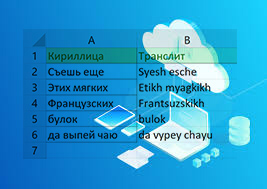This service translates the given Kazakh letters into similar characters in the basic Latin alphabet.
Insert the sentence you want to transliterate in the area below:
Kazakh writing is based on the Cyrillic alphabet. The Kazakh language uses the following letters of the Cyrillic alphabet to write:
A, B, C, G, Ғ, D, E, Y, F, Z, I, Y, K, Қ, L, M, N, Ң, O, Ө, P, R, C, T, U, Y, F, X, Һ, C, H, W, SH, b, S, I, b, E, Yu, I.
These letters are used to write sounds and words in the Kazakh language. The Kazakh alphabet, based on the Cyrillic alphabet, was introduced in 1940 and is the official alphabet for writing the Kazakh language in Kazakhstan.
In 2017, the transition to the Latin script for the Kazakh script was announced, and work is currently underway to develop and implement a new Latin script for the Kazakh language.
Features of the Cyrillic-based Kazakh script include:
Graphics and spelling: Kazakh writing uses special graphic forms of some letters, such as Ә, Ғ, Қ, Ң, Ө, Ұ, Ү, Һ, І. These letters represent the unique sounds of the Kazakh language.
Vowels and consonants: The Kazakh alphabet has a wide range of vowels and consonants, which allows more accurate representation of the sounds of the Kazakh language. For example, in the Kazakh language there are long and short vowels that differ in writing.
Sound representation: The Kazakh alphabet allows you to reflect the sounds and phonetics of the Kazakh language with a high degree of accuracy. One letter usually corresponds to one sound, which makes it easier to read and pronounce words.
Historical Significance: The Kazakh Cyrillic alphabet was introduced in 1940 and is of great historical importance for Kazakh culture and national identity.
Correspondence to other Turkic languages: The Cyrillic Kazakh alphabet is also used to write other Turkic languages such as Kyrgyz and Tatar. This facilitates mutual understanding and exchange of information between these languages.
These features allow the Kazakh alphabet in Cyrillic to effectively reflect the sounds and structure of the Kazakh language, ensuring its written expression and communication.

Comments
To leave a comment